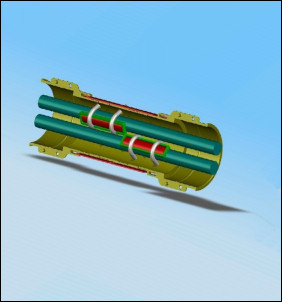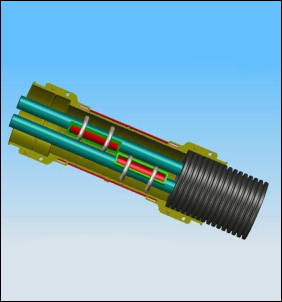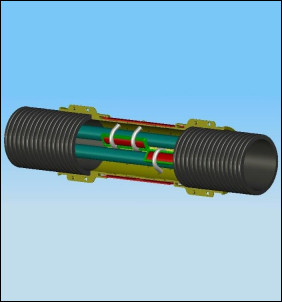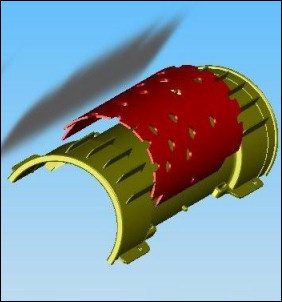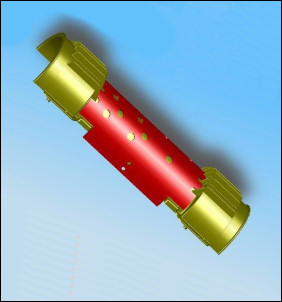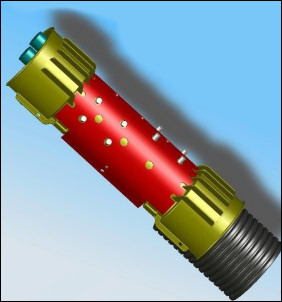
About RESLOCK

Globally, Telecommunication and Electrical Cable vandalism and theft have become one of the biggest obstacles to the provision of quality public utility services and data. Thieves are targeting anything made out of metals and iron cast, and these include anything from electrical power and telecommunications cables to manhole covers and tap heads. In 2006 alone, these companies recorded a loss of more than RM100 million. The vice accounts for enormous monetary losses to Government due to resultant disruptions in the service as well as the distress caused to its customers, besides the losses incurred on the replacement of the cable etc.
Since last year, in Malaysia, one of the big telecommunication providers including the public transport company`s communication line, have sustained losses amounting to an annual rate of RM 10 ~ 40 mil, each. The major issue of the vice is commonly attributed to theft of copper for commercial gain. Incidences whereby large capacity copper cables are cut with no appreciable lengths carried away have also become prevalent. This trend coincides with the advent of competition in the cable network segment.
Besides, thievery and vandalism had cost one of the biggest Telco company RM200 million last year, as reported by local tabloid. It also highlighted that thefts of cables and signal transmitters, costing between RM50,000 and RM100,000 a unit, occurred an average of five times a day. And that, the cost associated to repairs to the damage done by the thieves alone amounted to RM83 million. As for this particular Telco, 50 to 60 per cent of its users had to bear with disruption of telecommunication due to cable thefts.
Overall these had caused the Telco and public utility companies’ huge amount of opportunity losses, besides financial strain. It also incurred lost of lives due to the theft and inconvenience of service disruption.
Copper products are being stolen at an alarming rate from telecommunications sites throughout the country. Thieves are taking products like ground bars, walking into their neighborhood metal recycler and walking out with cash.
With the amount of work that constantly goes on at tower sites around the country, thieves can drive up to your site, even in broad daylight, and to casual observers they maybe resemble the crews that regularly work at your site. Unnoticed because they are unremarkable, they help themselves to your copper, generators and anything else they want and simply drive off. Neighbors and passersby most likely won’t notice whether the “crew” is adding cable, repairing cable, or stealing cable. Worse, in some cases the neighbors don’t care since they aren’t too happy to have your tower in their view anyway.
Vandalism and theft at communication site, particularly those in remote areas, is on the rise, driven by the ever rising price of copper and easy target most tower sites represent. Tower sites are full of copper. They have copper ground wires, copper buss bars and lot of transmission lines and other cable that are full of copper that can be, in most cases, easily stolen and sold quickly for cash to willing buyers. Last two years copper theft had been rampant that it is bleeding the Telco operators financially. A quick look at the table below would make one realize how prone the sites are to vandalism and the accompanied potential loss of revenue.
Current Status Of The Anti-Theft Solution
While Operators are mainly concerned on protecting their investments and tenant property, the sheer number of sites dispersed across the nation simply denies them of solving the problem of safe guarding their assets in a cost-effective and reliable manner. Experienced gained from security & surveillance applications in different industries have been proposed. But none promised to provide a holistic deterrent solution towards cable theft. For example there are:
- There are sites equipped with intrusion detection devices – primarily installed to protect equipment shelters and the contents therein
- There are fences that are not ”alarmed”, and there is no indication that the fence has been torn down before it is too late to stop the theft
- Even if a perimeter fence with alarm system is installed, these systems have often proven to trigger false alarms and, with no visual confirmation of an intrusion, alarms are normally ignored or responded to in a leisurely manner by enforcement officer, providing little or no hope of nabbing the snatch – and – go thieves.
- The addition of always – connected full motion video from each site back to the operators control centre – these present a whole lot of problems not to mention cost and bandwidth requirements
- Security Guards – the sheer number of sites render the use of security personnel financially unsustainable
- Sometimes repairing is less expensive than to install systems to stop the event from happening. But copper price, expected to rise will lure further theft, leading to a vicious circle of “contributing copper price up” – as the demand for copper increases, the number and frequency of sites robbery will, in all likelihood increase!!!
Our Proposal - New Protective Techniques & System
Our system is called Reslock
G4 Tec had been in the security business for the past 20 years and has vast experience in handling security and surveillance across wide industry application. It has been working with various security systems providers across the globe. G4 Tec is confident that the following solution is viable enough to secure the utility companies asset and safe all the opportunity losses hitherto lost.
While the cost of copper is rising, the cost of technologies available to help deter theft at remote sites are decreasing. Since most of the systems detect intrusion, report instantaneously, and set-off alarm immediately, it enables the thieves to "stop" and shop for somewhere else.
What we are proposing is a system that literally traps thieves by silently setting-off the alarm, remotely, without any audible signal to the enforcement officers. And, while the unsuspected thieves wrestle with the pull, which our system will not give way as easily as they would have anticipated, thereby giving enough time to for the officers to arrive and nab them once and for all.
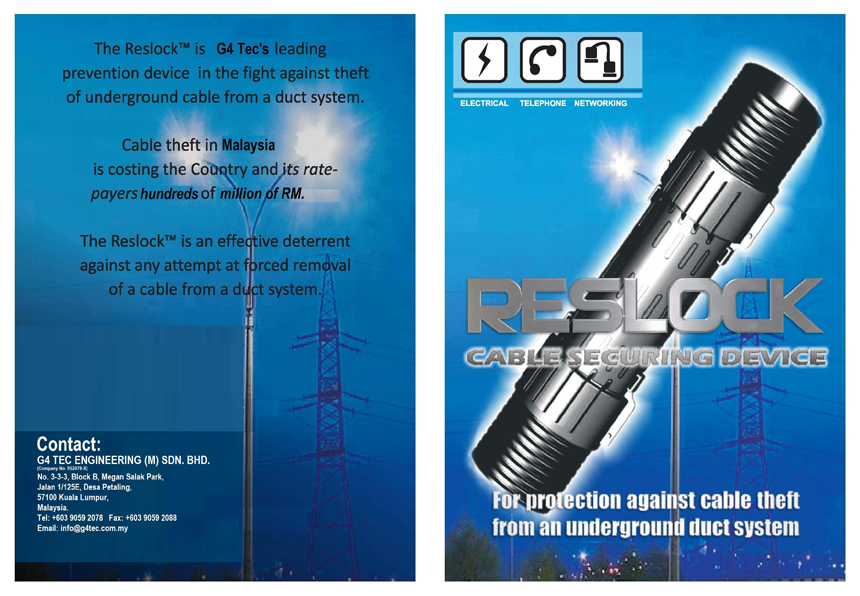

Our System Is Called Reslock
The Reslock is a patented electrical cable protection device which can be installed on any cable that has, or will be, installed in an extruded plastic ducting system underground, to prevent the theft or forced removal of the cable.
The Reslock was designed in 2004 and has taken six years to perfect what has been described as the ultimate in cable protection. The Reslock device is installed in line, at intervals of one to six meters of installed cable duct(depending on the vulnerability to the theft). This then becomes an integral part of the complete ducting system, allowing the cable to be pulled through the duct without any complications on installation.
The Reslock consists of two matching plastic molded sections, 390 mm long, manufactured from 30% glass-filled nylon. The electrical cable is then secured on the internal surface of one of the sections, by means of a plastic clamp with a steel insert, which in turn is bolted through the plastic section with U bolts onto the steel backing plate with galvanised U bolts. All the steel parts supplied are manufactured in either 3CR12, stainless steel or galvanised mild steel, depending on the customer’s requirements.
The completed Reslock is held together and secured to the plastic ducted system by means of four stainless steel bandit straps, thus creating the completed, secured system.(Fig 2.0) Up to four cables, 25 mm diameter, can be clamped in any one duct, as every second Reslock will then be the clamping unit. The system, due to its configuration, is water resistant once strapped together. The trench is then back filled and compacted to a recognized compacting specification.
The Reslock can be installed on existing and new installations. One Reslock for every 1 ~ 6m of ducting.;
- Cost Effective
- Easy to install
- Maintenance free and water resistant
- Electrically safe up to 1000v
- Locator beacons can be supplied if required
- Reslock alleviates the cost of employing security companies to guard the cable
- Reslock is on guard 24/7
 Download the RESLOCK Specifications Sheet
Download the RESLOCK Specifications Sheet
Cable Theft Alarm System
The installation also comes with a remote alert system, called Cable Theft Alarm System, CTAS, that, is connected to one of the single phases in the cable and as soon as the cable is cut it senses a problem The CTAS system comes with the soft ware that can send out a email or SMS to a number of terminals of the users choice, ie Mobile phone or PC personally. The CTAS sends out the alarm and coordinates; it’s up to the response of the security company to get to the scene as soon as possible. That is where the Reslock comes into its own as when the thieves cut the cable, the alarm goes off (silent), and as they try and pull the cable from the duct the Reslock prevents this, and delays the thieves on the scene, for enough time for the Security Company to get there. While public awareness campaign primarily aimed at creating awareness on the issue and appealing to consumers to play a more proactive role to prevent these thefts is important, it is also necessary to put in place a system that render the attempt well nigh impossible for the would be thieves, thereby both saving financial and lives lost.
- When an electrical cable is cut, in a theft attempt, a short circuit is created, our CTAS system when properly installed and programmed, can determine with accuracy where the cable has been cut as a percentage of total cable length.
- This information is then translated into the requirement of the user ie. Length from source where event occurred, which can in turn be translated into GPS co-ordinates provided the routing of the cable is known, or specific locations from GPS data bases (Google Map), if the routing is provided to the programmer.
- This information is then instantly translated to the required user via GSM mobile phone no or internet address. Additional relays provide ability to switch on alarms etc.
- The system is designed to be tamper-proof and will send an alert if an attempt is made to tamper with the unit. The unit is powered by the available electricity supply but has its own integral battery system to provide alerting capability for some time after power is removed.
- Our system is capable of providing additional continuous information as regards power usage etc. And transmitting the same as required.
- The system recognizes the difference between intentional power cuts and circuits interruptions and will alert as such.
- The system has 6 independent monitoring channels that can be connected to 6 separate single phase cable or 2 X 3 phase cables.
- The system is in the process of patent application.
Purpose of Reslock
- The purpose of the RESLOCK, patent number PCT/ZA/2011/00032, is to prevent theft of a cable from a Ducted/Conduit system, The more RESLOCKS attached to the cable in a ducted/conduit system the more protected the cable will be.
- The RESLOCK works on Electrical or Telecommunications cable.
- Our recommendation is to install one RESLOCK for every 6m of duct/ conduit used, and we have specified stress nuts to secure the clamps, to ensure that they cannot be removed.
- The RESLOCK works most effectively at a minimum depth of 800mm, with the soil compacted back to its original state. (Or the end uses spec)
- Two cables measuring from 7mm - 25mm diameter can be installed in the RESLOCK, and only one, for cables larger than 25mm diameter.
- If there are more than 2 cables measuring 7mm-25mm diameter then more than one RESLOCK can be fitted simultaneously to secure all cables (consequently if there is more than one cable measuring greater than 25mm, more RESLOCKS can be fitted to accommodate all the existing cables)
- The RESLOCK and the inner cable clamps are manufactured out of 30% glass filled nylon.
- All the steel plates are manufactured from 3CR12 stainless. The outer plate is 1,6mm thick and the inner plate is 2,5mm thick. The ’U’ bolts are 8mm in diameter and manufacture from mild steel, galvanized.
- When installing the clamps on Electrical cables the ’U’ bolts must be tightened evenly, with a minimum torque of 20Nm utilizing stress nuts.
- When installing telecommunication cables the ’U’ bolts must be torqued to 10Nm using set nuts firstly and then the stress nuts on top.
- The outer parts of the RESLOCK are secured by 4 stainless steel bandit-straps, 10mm in width and 0.5mm in thickness.
RESULTS OF FIELD TEST DONE ON RESLOCK CABLE PROTECTION DEVICE PATENT NUMBER 2010/03224
Objective
The object of the test was to confirm that the Reslock Anti Cable Theft device was able to withstand the force of a cable being removed from the ducted system by mechanical/forceful means.
Site Installation
A site was chosen and a trench 800mm deep by 36 meters long was dug, the 110mm diameter PVC cable duct was installed in 6 m lengths and a Reslock fitted every 6 m as recommended. Two cables, one Telecommunication cable 10mm dia and the other an Electrical cable 16 mm dia, were installed and attached in the Reslocks. The earth was then put back over the duct and compacted as per the local specification. At the end of the duct the cable protruded out 5 m to allow for attachment to the motor vehicle.
Test
The first test on the 10mm cable, it was attached by means of a chain to the Toyota Land Cruiser. The vehicle was put into Low range and an attempt was made to remove the cable. After various attempts the cable broke at the chain leaving the cable secured in the duct.
The second test was the 16 mm cable and this was attached by chain to a TLB Backacter, which has permanent four wheel drive. After various attempts and nearly tipping the backacter over, which caused the cable to break at the chain, leaving the remainder of the cable secured in the duct.
Both these test can be seen on U Tube under "Electric Cable Protection Device"
Conclusion
From the test it can be concluded that;- The trench must be dug to a depth of 800mm.
- The cables must be correctly secured to the Reslocks as per the Installation Pamphlet supplied.
- The earth that is placed back into the trench must be properly compacted, so as to return it, as close to its original state, as possible.
If all these steps are done properly it is impossible to remove the cable by forceful attempts. Once the perpetrators’ have attempted to remove a cable that is secured by the Reslock System, after all the effort of digging down to the duct, and getting no reward they will not attempt this again.

